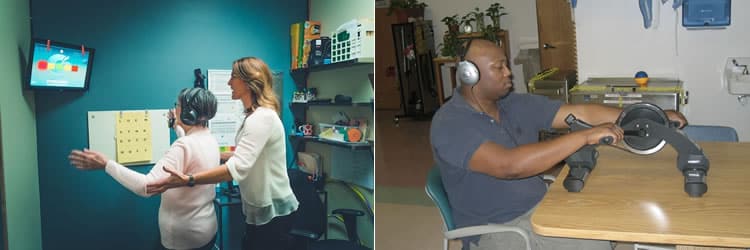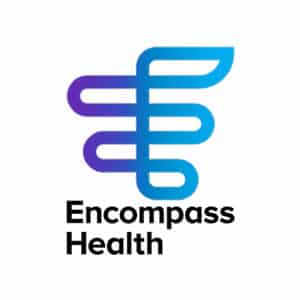What is Interactive
Metronome?
Interactive Metronome® (IM) is an evidence-based training and assessment tool.
IM is proven to improve cognition, attention, focus, memory, speech/language, executive functioning, comprehension, as well as motor and sensory skills.
What is Interactive
Metronome?
Interactive Metronome® (IM) is an evidence-based training and assessment tool.
IM is proven to improve cognition, attention, focus, memory, speech/language, executive functioning, comprehension, as well as motor and sensory skills.
What is Interactive
Metronome?
Interactive Metronome® (IM) is an evidence-based training and assessment tool.
IM is proven to improve cognition, attention, focus, memory, speech/language, executive functioning, comprehension, as well as motor and sensory skills.

Professionals Who Use IM In Their Practice
IM has gained international attention as a breakthrough intervention for healthcare professionals.
- Occupational Therapists
- Speech Language Pathologists
- Physical Therapists
- School Psychologists
- Educators
- Mental Health Professionals
- Neurologists
- Chiropractors
- Developmental Optometrists
Pediatric Professionals

Used in the treatment of ADHD, autism, sensory processing disorder, learning disabilities, developmental delays, speech-language issues, and more.
Adult Rehab Professionals

Rehabilitation & treatment of strokes, brain & spinal cord injuries, concussions, amputations & neurological diseases like Parkinson’s & MS.
How Does Interactive Metronome Work?

Proven Results with a Wide Range of Conditions
Clinicians demand evidence-based tools that get results and IM delivers.
Pediatric Conditions

- ADHD
- Autism
- Sensory processing disorder
- Learning disabilities
- Developmental delays
- Speech-language issues
- Cerebral Palsy
- Auditor Processing Disorder
- Dyslexia
- and more…
Adult Conditions

- Stroke
- Brain Injuries
- Spinal cord injuries
- Concussions
- Amputations
- Neurological diseases
- Parkinson’s
- MS
- and more…
Achievers

- Athletic Enhancement
- Gait Symmetry
- Injury Recovery
- Decision Making
- Balance
- Processing Speed
- Academic Performance
- Overall Wellness
Decades of Research, Results, and Real-World Impact
Clinicians just like you rely on IM to get better patient outcomes & increase their bottom line.
45,000+
Clinicians
& Counting
30+ Years
of Use as a Therapeutic Training Tool
45+
Peer-Reviewed Research & White Papers
1-MM
Successes by Clinicians & Patients
Easy, Convenient Options to Get IM Certified
In A Few Short Hours, Better Patient Outcomes Are Within Your Reach!

LIVE, Online
Virtual Certification Course
Get fully IM Certified (0.8 AOTA & ASHA CEUs) in one dynamic day of live online training from 9:00 AM–5:00 PM (check schedule for time zones). Led by an expert IM Provider, the course includes hands-on labs, live Q&A, and proven strategies to elevate patient outcomes and grow your practice.
“The best live course I’ve attended in years.” — Past Participant
No IM Pro equipment? No problem—you can borrow it!
Limited to the first 20 registrants—secure your spot today!
$249
*Course price does not include equipment. Course price with equipment is $299.

On-Demand
IM Certification Course
In this on-demand, self-study video course you'll have the convenience to study on your schedule and at your own pace.
Learn the scientific evidence behind IM and how to use and apply the Interactive Metronome to your clients, in a step by step, progressive learning program guided by professionally videoed IM Instructors.
Join the 45,000 professionals who are IM Certified!
Get Certified Quickly with this 8.5 Hour Course (0.85 AOTA CEUs and 0.85 ASHA CEUs)
$249
*Course price does not include equipment. Course price with equipment is $299.

In-Person
Live Certification Courses
Due to the popularity of our LIVE online certification class, in-person certification classes are only available for groups, on a case by case basis.
If you have an interest in arranging a LIVE certification course, please contact one of our representatives.
Getting certified has never been easier with our popular LIVE Online certification course or our on-demand certification course.
Eligible for 0.8 AOTA CEUs and 0.8 ASHA CEUs.
Attend a 1-Day, Live Online IM Certification Course
Seating is limited. Please register early to reserve your spot!

Attend a live online, 1-day Saturday or Sunday course from 9:00 AM to 5:00 PM*, leading to full IM Certification. Live training is packed with dynamic content taught by an IM Provider. Get all your questions answered and learn how this technology can transform patient outcomes and your practice. We've been told, "The best live course I've attended in years," come see why!
*See the time zone option next to the course date.
Course price does not include equipment. Course price with equipment is $299.
Curious? Got Questions?
We have IM consultants standing by to answer your questions.
Clinicians Love Using IM
Clinicians want evidence-based tools that get results and this is where IM delivers.
Why Clinicians Love IM
- Multi-disciplinary tool
- Cross-discipline case coordination
- Baseline, realtime & over-time assessments
- Cloud based portal to track & share progress
- Clinical & Individualized support
- IM Academy, 90+ on-demands training webinars
- Coach multiple clients simultaneously
- Scale up your practice more easily
- Stand out by offering a proven, in-demand therapy
- Get listed as a licensed provider on our website
- In-person and on-demand training and support

Improve Your Practice with IM
Thousands of clinicians use IM to better patient outcomes.
They also see nice improvements to their bottom line. Grow your practive more easily wth IM.
Why Do Clinicians Love Interactive Metronome?

Kelly Coleman
OTR/L
“Introducing Interactive Metronome to our facility has not only changed our approach to facilitating treatment techniques, but has also allowed us to target a population who felt there was no hope in improving their quality of life. My patients who have completed the IM program have found the ability to return to meaningful activities by improving their balance, coordination, and overall confidence in their daily lives. Not only has this program brought us great results from a treatment perspective, but it has allowed our facility to grow and be known throughout the community.”

Cheryl Miller
OTR/L
“The IM has provided a tool for therapists across our company to engage patients in their therapy. With the IM we can push for greater gains in cognition, coordination and balance than we could before. It is a proven modaility used by therapists to get better outcomes.”

Lorraine Sgarlato
AuD, CCA
“I have been using Interactive Metronome for almost ten years and have witnessed statistically significant progress in just a few short weeks of therapy. I believe Interactive Metronome should be the first step in a therapeutic approach to improve the emotional, cognitive, motor, academic and sensory deficits of your clients. It is the only program of it’s kind that delivers results so quickly and is so easy in it’s application. It is suitable for adults and children regardless of their disabilities. It should be a part of every therapist’s practice!”
Getting Started With IM Is Easy
Request an online demo or take a FREE intro course at your own pace.
Better yet, attend a 1-day live course in your area!

Request a Call
15 Minutes is all it takes. We’ll personalize this demo just for you, to answer all your questions and share with you how other clinicians are successfully using IM to achieve better outcomes and an improved bottom line.

FREE Introductory Course
Take your time and earn contact hours/CEUs with a FREE on-demand introductory course. Learn about the technology and why many professionals use IM in their practice. Plus you’ll earn Contact Hours/ ASHA/ AOTA CEUs!

IM Help For Parents
Heard about the successes of IM and want to help your child achieve more? We have a network of 45,000 providers that helps kids increase attention span, sharpen focus, improve learning & social skills.
IM-Home: Flexible, Remote Therapy That Keeps Clients Progressing
Treat clients & keep your practice generating revenue with IM-Home remote training!
April Christopherson, OTR/L, private clinic owner and IM instructor, has leveraged our remote therapy product called IM-Home as a tele-health tool to keep clients progressing & winning when they’re not in the clinic. She’s explains how she’s earning more money, having fewer cancellations and even touches on insurance billing.

IM-Home Telehealth Benefits
- Train your clients remotely with proven IM technology
- Access IM-Home eClinic via “the cloud”
- Trackability to monitor & validate training
- Mature, proven platform backed by science
- IM training template library for easy client setup
- Customizable training plans
- Access clients’ training reports in real-time
- Robust client messaging system to encourage compliance
IM Works.
Find Out How It Can Impact Your Practice
With IM you can easily scale & grow your practice, all while achieving better patient outcomes!
As Seen On





















